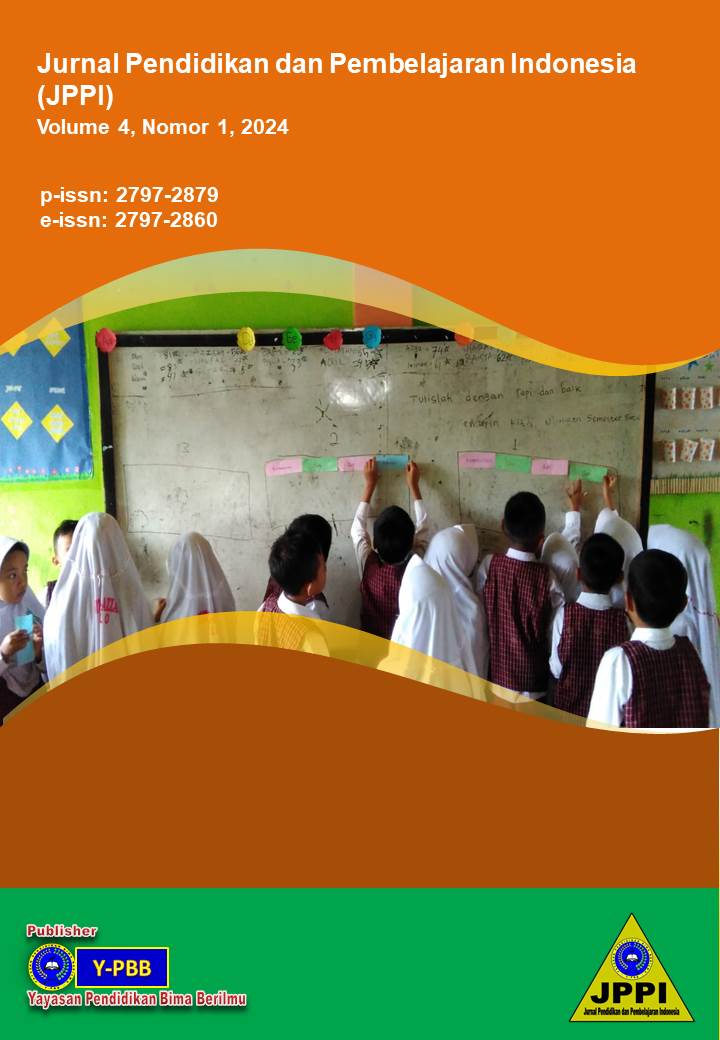Color Vowel Approach: Coping with Students’ Learning Styles in Teaching Pronunciation
DOI:
https://doi.org/10.53299/jppi.v4i1.512Keywords:
English, Learning style, PronunciationAbstract
The objective of this study was to probe how to provide a teaching method which accommodates learning styles preferred by students and boost their learning achievement in Pronunciation Practice course by using Color Vowel approach. This qualitative research was conducted at the English Education study program of Islamic State University Datokarama Palu where second semester students were taken as participants. Data gathered from pre-research survey, field notes, questionnaire, and mid-term test result analysis showed that a significant correlation between the use of Color Vowel approach and students’ learning achievement in Pronunciation Practice course was undeniable. It helped the students to easily comprehend material being taught as well as yielded a relaxed learning environment where students could learn best.
References
Brown, A. (2014). Pronunciation and Phonetics a Practical Guide for English Language Teachers. New York: Routledge.
Carly, P, & Mees, I. M. (2020). American English Phonetics and Pronunciation Practice. New York: Routledge.
Chan, M. J. (2018). Embodied Pronunciation Learning: Research and Practice. The CATESOL Journal. Retrieved from http://www.catesoljournal.org/wp-content/uploads/2018/03/CJ30.1_chan.pdf
Color Vowel English Language Training Solutions. Retrieved from https://www.colorvowel.com
Creswell, J. W. (2014). Research Design: Qualitative, Quantitative, and Mixed Methods Approaches. California: Sage Publication.
Darcy, I. (2018). Powerful and Effective Pronunciation Instruction: How Can We Achieve It? The CATESOL Journal, 30(1), 13-45. Retrieved from https://eric.ed.gov/?id=EJ1174218
Foote, J. A. et al. (2011). Survey of the Teaching of Pronunciation in Adult ESL Programs in Canada, 2010. TESL Canada Journal. Retrieved from https://teslcanadajournal.ca/index.php/tesl/article/view/1086
Kone et al. (2019). The Implementation of Color Vowel Chart to Enhance the EFL Students’ Pronunciation At SMPN 1 Majauleng. Universitas Muslim Indonesia. Retrieved from https://jurnal.fs.umi.ac.id/index.php/tamaddun-life/article/view/71
Low, E. (2015). Pronunciation for English as an International Language: From Research to Practice. New York: Routledge.
Nagle, C. et al (2019). The Changing Face of L2 Pronunciation Research and Teaching. Pronunciation in Second Language Learning & Teaching. Iowa State University Digital Press. Retrieved from https://www.iastatedigitalpress.com/psllt/article/id/15361/
Ngunyen, C.H. et al. (2021). Boosting English Major’s Ability in Pronouncing Stressed Vowel Using Blue Canoe, a Mobile-Based Application: A Focus in Vietnamiese EFL Learners. ASIA Call Online Journal, 12(4), 46-65. Retrieved from https://asiacall.info/acoj/index.php/journal/article/view/64
Pennington, M.C. (2021). Teaching Pronunciation: The State of the Art 2021. RELC Journal. SAGE Journal. Retrieved from https://journals.sagepub.com/doi/full/10.1177/00336882211002283
Polat, Y. et al. (2015) The Effect of Learning Styles of Accounting Education Students on Their Performance: a Field Study. Procedia Social and Behavioral Sciences. Retrieved from https://www.researchgate.net/publication/277651608_The_Effect_of_Learning_Styles_of_Accounting_Education_Students_on_their_Performance_A_Field_Study
Questionnaire of Learning Styles. University of California. Retrieved from https://learning.ucmerced.edu/sites/learning.ucmerced.edu/files/page/documents/learningstylequestionnaire.pdf
Sardegna, V.G. & McGregor, A. (2013). Scaffolding Student’s Self-Regulated Efforts for Effective Pronunciation Practice. Proceedings of the 4th Pronunciation in Second Language Learning and Teaching Conference, 8(1), 182-193. Retrieved from http://d-scholarship.pitt.edu/35174/10/Sardegna_McGregor%20PSLLT%202013.pdf
Syaifullah et al. (2022). Using Color Vowel Chart in Teaching Speaking. ELT-Lectura: Studies and Perspectives in English Language Teaching 9 (2). Retrieved from https://pustaka-psm.unilak.ac.id/index.php/ELT-Lectura/article/view/10317
Taylor, K., et.al. (2016). The Color Vowel Approach: Resources for Connecting Pronunciation to Vocabulary, Reading, and Spelling. Santa Fe: ELTS Solution.
U.S. Department of State’s Office of English Language Programs. Retrieved from https://americanenglish.state.gov
Willingham, D.T. et. al. (2015). The Scientific Status of Learning Styles Theories. Teaching of Psychology 42(3), 266-271. Retrieved from https://journals.sagepub.com/doi/abs/10.1177/0098628315589505
Yoshida, M. T. (2019). Choosing Technology Tools to Meet Pronunciation Teaching and Learning Goals. The CATESOL Journal. Retrieved from https://files.eric.ed.gov/fulltext/EJ1174226.pdf
Downloads
Published
Issue
Section
License
Copyright (c) 2024 Jurnal Pendidikan dan Pembelajaran Indonesia (JPPI)

This work is licensed under a Creative Commons Attribution 4.0 International License.














